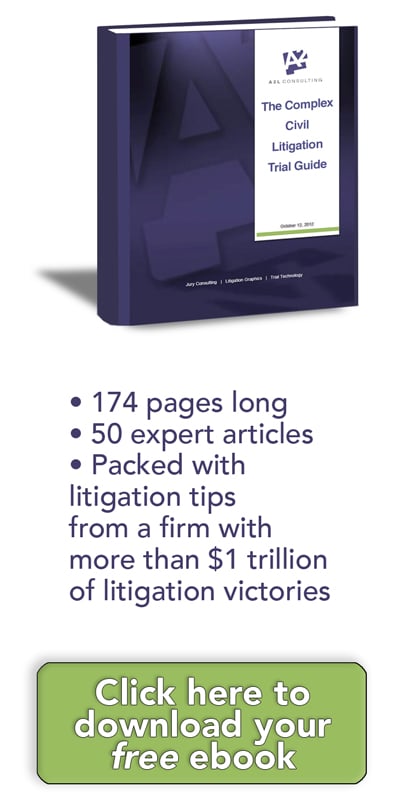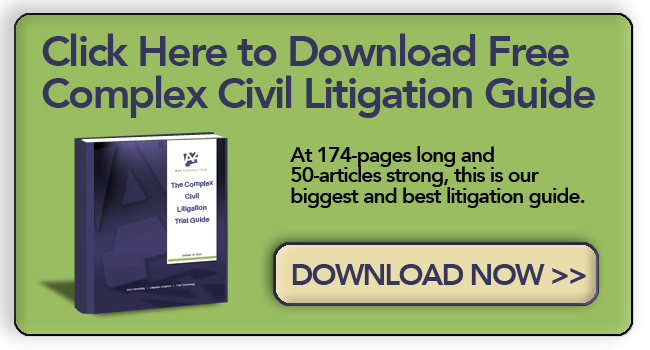 by Ken Lopez
by Ken Lopez
Founder & CEO
A2L Consulting
Here at A2L Consulting, we have just published our latest e-book – the Complex Civil Litigation Trial Guide. At 174-pages and 50-articles long, it is our biggest and best yet. We think it will be useful to any attorney or litigation support professional who is engaged, or who may soon be engaged, in a complex civil case.
We don’t have a set definition for “complex civil litigation,” and really no one does. However, we think a piece of litigation can be called complex when several of these criteria are met:
- the case requires the near full-time attention of five or more lawyers for at least a month;
- the case involves more than two law firms on either side of the case;
- the case involves more than a dozen witnesses;
- the case has at least $10 million at stake plus complicated subject matter;
- the case potentially involves pattern litigation.
Most of the cases that A2L Consulting works on satisfy at least four of the above criteria. These cases are complex because of what is at stake, how many people are involved, and the sheer amount of time required to litigate them. More experts mean more documents. More patents mean longer explanations to juries. More documents mean more data to be analyzed. More deponents mean more video depositions to be edited. All these factors and many others help make a case complex. Nearly any civil case that you read about in a major newspaper or see on the national news is going to be a complex case. Think about the patent dispute between Apple and Samsung or the litigation growing out of Hurricane Sandy.
In another sense, however, complexity is the enemy of the trial lawyer. A case positioned for a win abhors complexity. Indeed, in our view a case that goes to trial while still too complex to explain to your parents while riding an elevator is a case that’s dangerously on the wrong track.
After all, a judge or jury needs to understand your case if you are going to win. Any case, even the most complex, has a story at its heart, and a good trial team, assisted by an excellent trial consulting company, will tell that story well.
In fact, I think the most important thing that a litigation consultant can do to help a trial team is to help develop that story. A litigation consultant brings not only the common sense that a fresh pair of eyes offers but also the experience of having seen, in hundreds of trials, what works and what does not work.
This e-book is designed to help trial teams and those who support them develop a case and win at trial. We want you to master the complexities of your case, yet still remain able to explain them to a judge or jury as if the case were a straightforward auto accident or real estate dispute.
Among the topics in the e-book are: Seven Ways to Draft a Better Opening Statement, How to Embrace a Two-Track Strategy and Win the War, Six Reasons the Opening Statement is the Most Important Part of a Case, How Timelines Can Persuade Judges and Juries, and Ten Videos to Help Litigators Become Better at Storytelling.
We also show you how to pick a trial graphics consultant to support your work, what to do when your trial team goes bad as a result of the anxiety that understandably can accompany any piece of complex litigation, and how trial graphics can explain even the most complicated scientific and engineering concepts to a jury.
If you work in a courtroom, there is something valuable here for you. Click here to download.





Leave a Comment